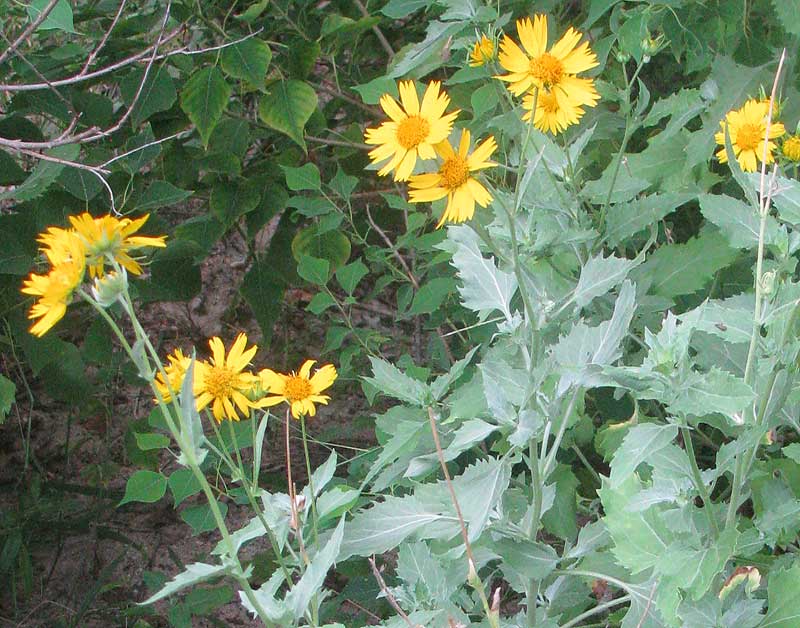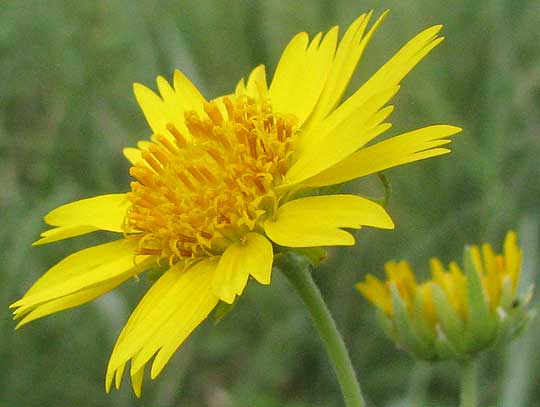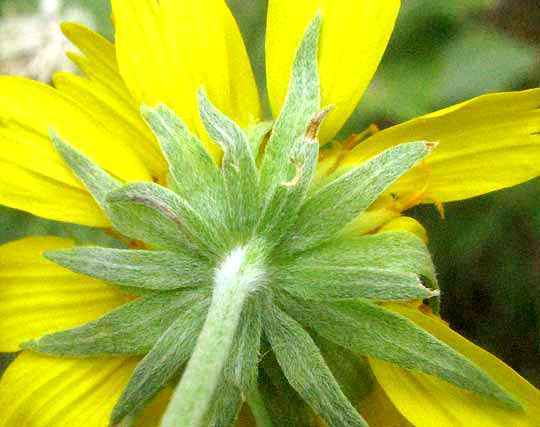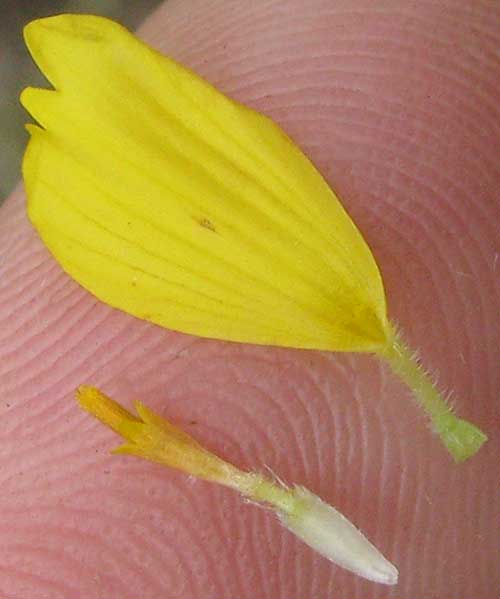Excerpts from Jim Conrad's
Naturalist Newsletter

from the the September 9, 2012 Newsletter issued from the valley of the Dry Frio River in northern Uvalde County, southwestern Texas, on the southern border of the Edwards Plateau; elevation ~1750m (~5750 ft); N29.62°, W99.86°; USA
COWPEN DAISY
Nowadays in this part of the country one of the most conspicuously flowering and common wildflowers is the waist-tall, much branching member of the Composite or Sunflower Family with alternating, silvery-green-leaves and yellow blossoms shown above.
This pretty herbaceous plant grows all along rocky limestone cliffs hemming in the Dry Frio River, along roadsides, and as a display plant in my host's wildflower garden. Before I came here my host tested me by sending a picture of the plant. Knowing that the Flora of North America treats 2413 species of the Composite Family, and seeing that the picture didn't show most of the features used when differentiating the 2413 species, I had no idea what it was, and just told my host that it was one of many members of the Sunflower Family. This did not help my credibility as a naturalist, since my host knew it was common as sin and that everyone and his brother called it Cowpen Daisy.
This week I "did the botany" on the Cowpen Daisy. A close-up of a single head, with numerous disk flowers in the center surrounded by many ray flowers, each ray corolla deeply incised with three teeth at their tips is shown below:

Overlapping, sharp-pointed bracts beneath the head are invested with a wool of silvery hairs as shown below:

Below, at the image's bottom, you see a disk flower, the white base of which is the future dry, one-seeded fruit, or achene, atop which arise several short, sharp scales and two or three short, slender hairs. The ray flower at the top lacks the white achene because it is sterile.

Below, you can see some mature achenes with their distinctive "wings" of stiff, tawny hairs:

So, all this and more means that here we have VERBESINA ENCELIOIDES, which my Peterson field guide to the wildflowers of the Southwest and Texas names Golden Crownbeard. Other sources call it Butter Daisy, American Dogweed, South African Daisy, Wild Sunflower. Girasolcito, Yellowtop, Anil del Muerto and, even Cowpen Daisy. That's what I'll call it, since people around here know it only by that name.
Cowpen Daisies are tough, aggressive plants that can invade disturbed habitats as "weeds." As such they are so generally distributed that the experts can't say exactly where their homeland is, other than somewhere in the relatively hot, dry areas of the Americas. In the US it turns up in most of the south and central states, plus Mexico, the Caribbean, and South America, plus it's been introduced into Asia, Australia and Hawaii.
On Midway Island introduced Cowpen Daisies threaten all ground-nesting birds, especially rare Laysan Albatrosses, because the plants grow up rapidly around nests preventing parent birds from feeding their chicks. The chicks become trapped and are unable to reach the ocean at fledging, and die of starvation. The plants also shelter aphids, scale insects, and the ants that tend them, the ants then preying on the eggs and chicks of ground-nesting birds. Here in its native land the Cowpen Daisy has evolved in a cooperative way with its surrounding community of plants and animals, and doesn't create such problems. But where it's introduced as an invasive, it can be very destructive and undesirable.
Though accounts mention Cowpen Daisies being used to treat skin ailments of early settlers and indigenous Americans, the plants aren't known as being particularly medicinal. They contain the compound galegine, which can be lethal in large enough amounts, though. The flowers seem to be an exceptional source of nectar for pollinators, and they are so downright pretty, however, that here in their native land you just have to appreciate them.